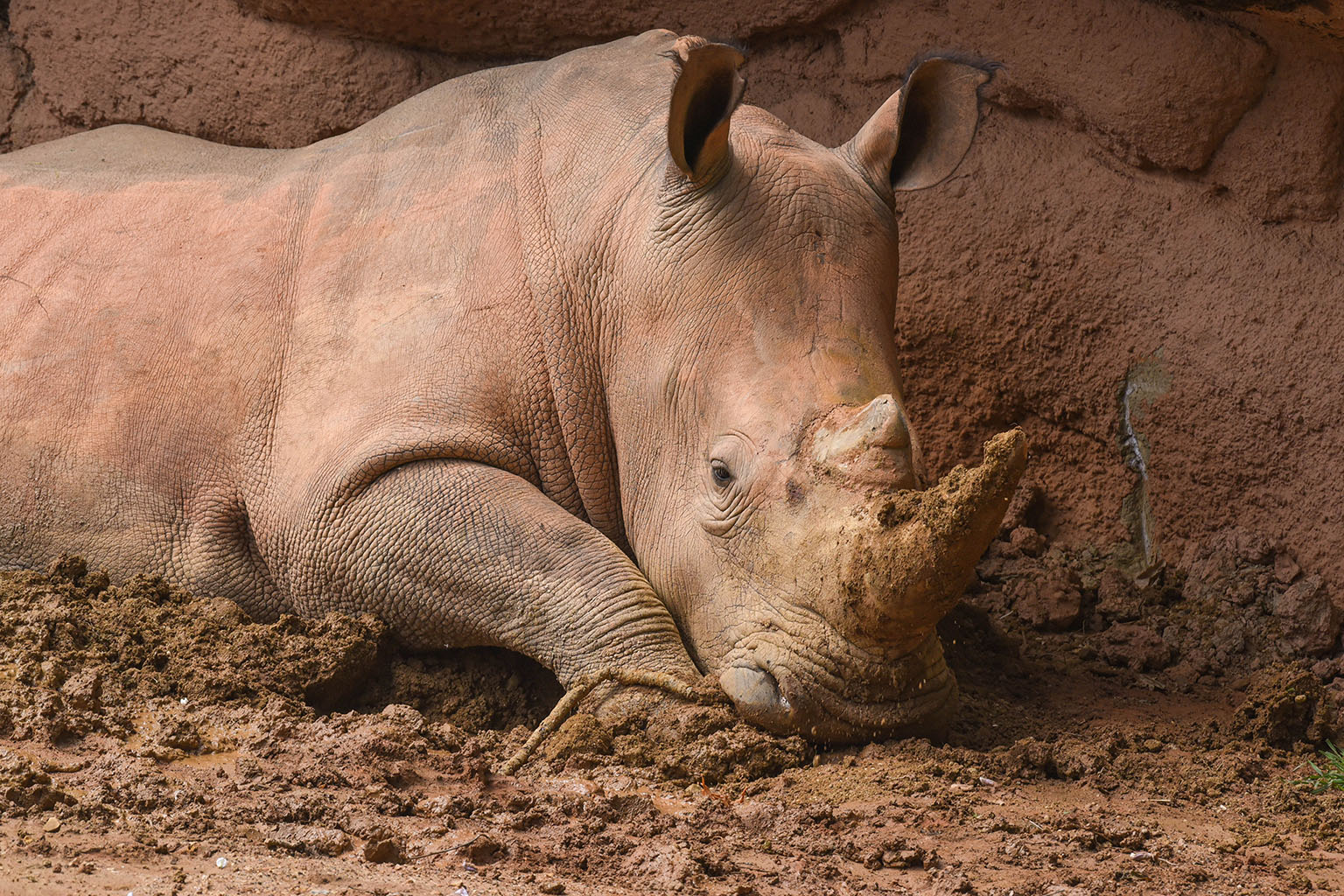


The destruction of the megaherbivore could have serious cascading effects on the ecosystem and harm other animals. Comparatively based on studies of the African elephant, scientists believe the white rhino is a driving factor in its ecosystem. The white rhinoceros is thought to have changed the structure and ecology of the savanna's grasslands. White rhinoceroses, like all species of rhinoceros, love wallowing in mud holes to cool down. It spends about half of the day eating, one third resting, and the rest of the day doing various other things. It drinks twice a day if water is available, but if conditions are dry it can live four or five days without water. Herbivore grazers that eat grass, preferring the shortest grains, the white rhinoceros is one of the largest pure grazers. White rhinoceroses are found in grassland and savannah habitat. A diploid cell has 2 x 40 autosomals and 2 sex chromosomes (XX or XY). The genome size of the white rhinoceros is 2666.62 Mbp. The white rhinoceros has the widest set of nostrils of any land-based animal. The olfactory passages that are responsible for smell are larger than their entire brain. Its ears can move independently to pick up sounds, but it depends most of all on its sense of smell. White rhinos have a distinctive broad, straight mouth which is used for grazing. Its only hair is the ear fringes and tail bristles. The color of the body ranges from yellowish brown to slate grey. Each of the four stumpy feet has three toes. The white rhinoceros also has a noticeable hump on the back of its neck. The front horn is larger and averages 60 cm (24 in) in length, reaching as much as 150 cm (59 in) but only in females. These are made of solid keratin, in which they differ from the horns of bovids (cattle and their relatives), which are keratin with a bony core, and deer antlers, which are solid bone. On its snout it has two horn-like growths, one behind the other. The largest size the species can attain is not definitively known specimens of up to 3,600 kg (7,940 lb) are considered reliable, while larger sizes up to 4,500 kg (9,920 lb) have been claimed but are not verified. The male, averaging about 2,300 kg (5,070 lb) is heavier than the female, at an average of about 1,700 kg (3,750 lb). The head and body length is 3.7 to 4 m (12.1 to 13.1 ft) in males and 3.4 to 3.65 m (11.2 to 12.0 ft) in females, with the tail adding another 70 cm (28 in) and the shoulder height is 170 to 186 cm (5.58 to 6.10 ft) in the male and 160 to 177 cm (5.25 to 5.81 ft) in the female. It has a massive body and large head, a short neck and broad chest. It weighs slightly more on average than a hippopotamus despite a considerable mass overlap between these two species. By mean body mass, the white rhinoceros falls behind only the three extant species of elephant as the largest land animal and terrestrial mammal alive today. The white rhinoceros is the largest of the five living species of rhinoceros. Simum, is derived from the Greek term simos (σιμός), meaning "flat nosed". The white rhinoceros' generic name, Ceratotherium, given by the zoologist John Edward Gray in 1868, is derived from the Greek terms keras (κέρας) "horn" and thērion (θηρίον) "beast". A review of Dutch and Afrikaans literature about the rhinoceros has failed to produce any evidence that the word wijd was ever used to describe the rhino outside of oral use.Īn alternative name for the white rhinoceros, more accurate but rarely used, is the square-lipped rhinoceros. This suggests the origin of the word was before codification by Dutch writers. Ironically, Dutch (and Afrikaans) later used a calque of the English word, and now also call it a white rhino. So early English-speaking settlers in South Africa misinterpreted the "wijd" for "white" and the rhino with the wide mouth ended up being called the white rhino and the other one, with the narrow pointed mouth, was called the black rhinoceros. The word "wide" refers to the width of the rhinoceros's mouth. The English word "white" is said to have been derived by mistranslation of the Dutch word "wijd", which means "wide" in English. The white rhinoceros ( Ceratotherium simum) is the largest extant rhino.Ī popular albeit widely discredited theory of the origins of the name "white rhinoceros" is a mistranslation from Dutch to English.


 0 kommentar(er)
0 kommentar(er)
